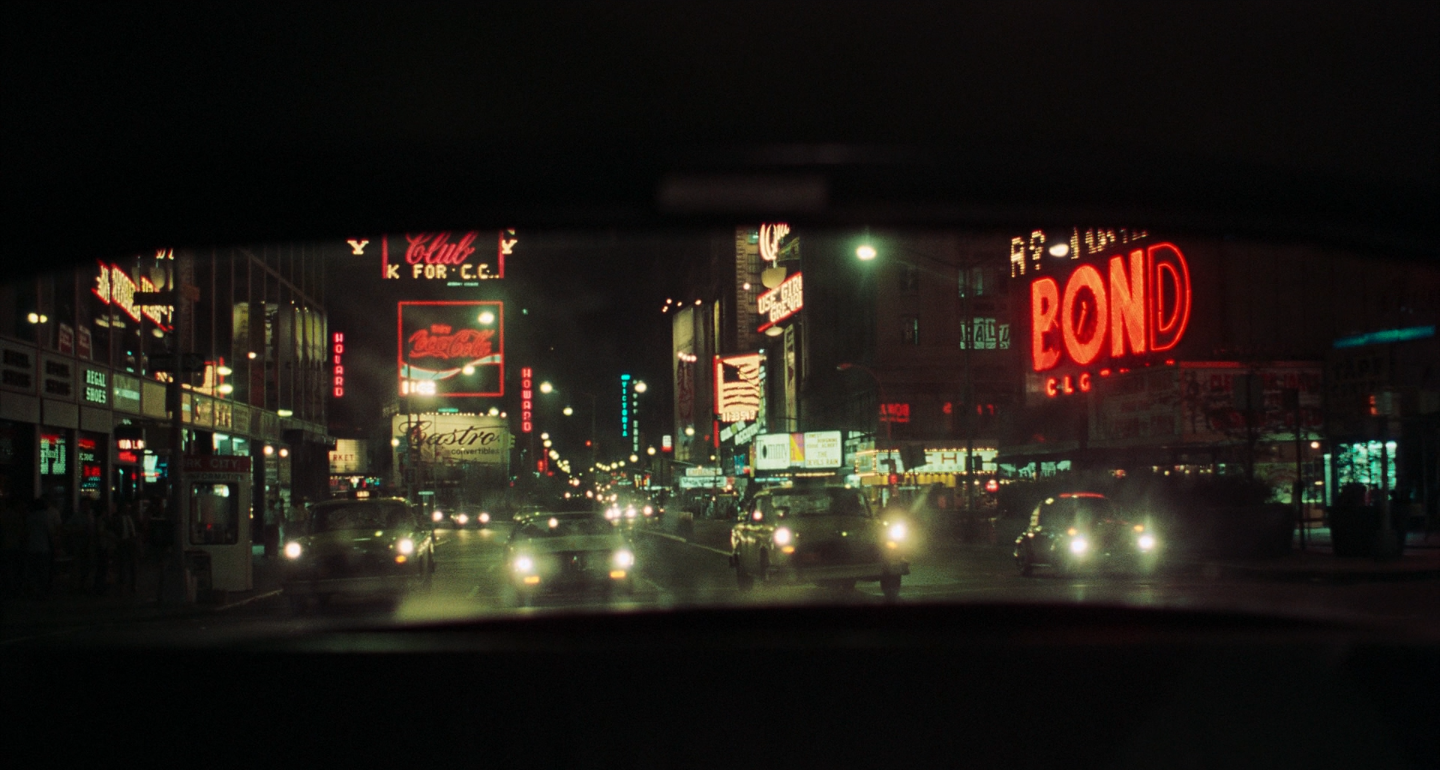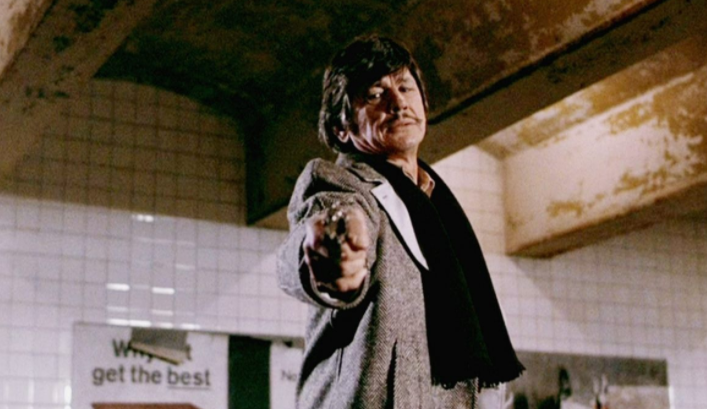
THE PODCAST
Episode 10: 'The Deuce'
No two films capture the urban grime and desperate time of New York City in the late 1960s and 1970s like John Schlesinger’s Midnight Cowboy and Martin Scorsese’s Taxi Driver. Both films set much of their action in Times Square (and specifically on “The Deuce,” the block of porno houses and grindhouses on 42nd between Seventh and Eighth Avenues), evocatively documenting that district in its heyday – or its nadir, depending on who you talk to.
In this episode, we’ll examine the history of Times Square, and its evolution from Gotham’s epicenter of sex to its soulless current iteration, as well as the making of Midnight Cowboy and Taxi Driver. And in telling those stories, we’ll look at how the “Disneyfication” of Times Square mirrors the suburbanization of New York, and ask what was lost (and gained) in the transition.
Our guests are Midnight Cowboy cinematographer Adam Holender, film critic and historian Glenn Kenny, historian and author Kim Phillips-Fein, and Taxi Driver director Martin Scorsese.
Episode 9: 'Keep America Beautiful'
John G. Avildsen’s 1970 New York drama was originally titled The Gap, dramatizing the white-hot topic of the generation gap through the story of a white-collar businessman searching for his hippie daughter in New York’s seedy youth underbelly. But when it came out in that summer, its ad campaign focused on the supporting character of a loudmouth, bigoted hardhat, and it had also been retitled after that character: Joe.
In this episode, we’ll look at how the May 1970 “Hardhat Riot” in downtown New York City prompted not only that change, but a shift in electoral norms and party politics that continues to this day. And we’ll look at Milos Forman’s Taking Off, released the following year, which told a similar story of well-to-do parents searching for their hippie daughter in Gotham, but in a very different way (and with a very different outcome).
Our guests are author and historians Jefferson Cowie and Derek Nystrom, filmmaker Larry Karaszweski, and film writers Kristy Puchko and Zach Vasquez.
Episode 8: 'Subway Stories'
One of the mainstays of NYC cinema is the subway, which serves as an immediate visual cue to not only the city’s setting, but its mood. But the subway is also, conveniently for dramatists, a microcosm of Gotham. The city and its subway are both places where people of all walks of life – race, class, gender, temperament – rub shoulders and try to get along.
In this episode, we look at the production of two iconic examples of NYC subway cinema: The Taking of Pelham One Two Three (1974) and The Warriors (1979). But we also look at the complicated history of the subway – where it came from, what it promised, and what it delivered – as well as its challenging present and uncertain future.
Our guests are historian Nancy Groce, pop culture writer Hunter Harris, Warriors director Walter Hill, public transit expert Danny Pearlstein, and film critic Alissa Wilkinson.
Episode 7: 'Judge, Jury, and Executioner (Part Two)'
The 1974 Charles Bronson vehicle Death Wish is far from the best New York movie of the era – but it may be the most influential. Its story of a mild-mannered upper-class Manhattan resident who responds to the rising crime rates by taking the law into his own hands, hitting the streets and taking out muggers and criminals of various types (but mostly black, brown, and poor) hit a nerve in the city, and across the country.
Its influence was reflected not only in movies – where it beget a series of sequels, imitators, remakes, and rip-offs – but in the culture, where its noble image of the one-man justice squad often resulted in messier outcomes than onscreen. And it altered the lives of several of its participants, including star Bronson (who found himself typecast for the rest of his career) and Brian Garfield, author of the book that inspired it, who spent the rest of his life crusading against the film adaptation’s mangled message.
We’ll explore all of that and more in this two-part episode. Our guests for part two are New Yorker staff writer Jelani Cobb, film historians and pop culture critics LaToya Ferguson, Matt Prigge, and Paul Talbot, and filmmaker (and Death Wish 3 co-star) Alex Winter.
Episode 6: 'Judge, Jury, and Executioner (Part One)'
The 1974 Charles Bronson vehicle Death Wish is far from the best New York movie of the era – but it may be the most influential. Its story of a mild-mannered upper-class Manhattan resident who responds to the rising crime rates by taking the law into his own hands, hitting the streets and taking out muggers and criminals of various types (but mostly black, brown, and poor) hit a nerve in the city, and across the country.
Its influence was reflected not only in movies – where it beget a series of sequels, imitators, remakes, and rip-offs – but in the culture, where its noble image of the one-man justice squad often resulted in messier outcomes than onscreen.
We’ll explore all of that and more in this two-part episode. Our guests for part one are film historians and pop culture critics LaToya Ferguson, Matt Prigge, and Paul Talbot, as well as filmmaker (and Death Wish 3 co-star) Alex Winter.
Episode 5: ‘Tribute in Light'
When the Twin Towers of the World Trade Center fell on September 11, 2001, New York City was changed forever: its skyline, its people, its mood. And its films were changed as well – some more immediately than others, as filmmakers struggled to determine how to deal with the now ghostly presence of the towers in films completed but not released before 9/11. Some films edited them out, some digitally removed them. But Brooklyn’s own Spike Lee went the opposite direction, adding the tragedy into his film “25th Hour,” which was slated to shoot in the city that fall and winter. In doing so, he ended up crafting what we now consider the definitive post-9/11 New York movie.
We’ll hear archival audio of Lee and star Edward Norton explaining that decision and that process, and we’ll break down the film that resulted, with the help of film critics Roxana Hadadi, Keith Phipps, and Scott Tobias, as well as filmmaker Jennifer Westfeldt (“Kissing Jessica Stein”).
Episode 4: ‘Lost in New York’
We thought it would be fun to do a nice, light Christmas episode, focusing on one of the many beloved Gotham holiday movies. Just take it easy for an episode, right? Kinda phone it in? So we settled on Chris Columbus and John Hughes’ 1992 smash Home Alone 2: Lost in New York – and ended up talking about Rudy Giuliani, Donald Trump, “Broken Windows,” the Central Park Five, and 9/11, along with the film’s total geographical inconsistency and the spectacular tonal failure of its violence.
Our guests are “Close-Ups: New York Movies” author Mark Asch, Pitchfork senior editor Jillian Mapes, “You’re Wrong About” co-host Sarah Marshall, and freelance film writer Anya Stanley. Happy holidays!
Episode 3: ‘No Wave Women’
In the late 1970s and early 1980s, a combination of factors – including low rents in abandoned neighborhoods, new and more affordable technology, a cross-pollination of media, and a punk-influenced DIY spirit – collided on Manhattan’s Lower East Side to create a scene, commonly known as “No-Wave,” that dominated music, visual art, and film. And, unique among American independent cinema movements, there were just as many women in downtown NYC making movies as men. What was it about this scene that made it possible for women filmmakers to not only thrive, but dominate?
Our guests are three of those filmmakers: Susan Seidelman (“Smithereens”), Bette Gordon (“Variety”), and Lizzie Borden (“Born in Flames”), as well as contemporary film and fashion writer Abbey Bender.
Episode 2: ‘Starring the NYPD’
The New York movie and the New York cop movie are inextricably intertwined – so much so that the first major studio picture of the talking era to be shot in New York, The Naked City, was a cop movie. But in the years following the protests and policing reforms of the 1960s, Gotham cop movies like The French Connection and The Seven-Upsfocused on a specific kind of New York cop, who could only clean up the mean streets if he bent those pesky rules. This episode contrasts the NYPD of film and television to the real department – one that was, in the same era, rife with graft, corruption, and worse – and reexamines that messaging within the current national conversation about policing.
Our guests are MSNBC’s Chris Hayes, The Undefeated’s Soraya Nadia McDonald, and film writer Zach Vasquez, with special appearance by Karina Longworth.
Episode 1: ‘Fight the Power’
Spike Lee’s 1989 film Do the Right Thing, shot on location in Bed-Stuy, Brooklyn, is now considered not only a classic of modern cinema, but a clarion call to social justice, frequently connected with current acts of racist violence. But Do the Right Thing was inspired by specific historical events in New York City in the years before its release – and a general atmosphere of racial tension and police brutality, much of it empowered by the casual racism of Mayor Ed Koch. This episode connects the film to those incidents and to that atmosphere, and looks back at its initial (and fraught) reception. We also connect Lee’s iconic work to current events, and ask how we can carry its lessons into the current struggle.
Our guests are New York Times op-ed / culture editor Aisha Harris, Making Rent in Bed-Stuy author Brandon Harris, indie film guru (and Spike, Mike, Slackers and Dykes author) John Pierson, and Rolling Stone senior writer Jamil Smith.
About the Producer
Michael Hull is a producer who oversees The Re:Settlement and Black Diplomats, two podcasts that focus on uplifting Black voices in our national dialogue. He is the manager of the Elizabeth M. Fink Attica Archive and director of Betrayal at Attica (now streaming on HBOMax), a documentary action plan that records state violence agains citizens and guides conversations around alternatives to policing. He likes gardening and listening to Rhiannon Giddens when he needs to be reminded of the beautiful things in life.










